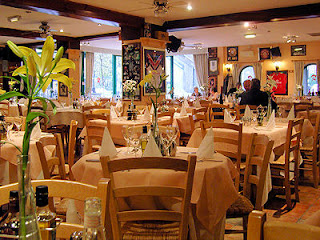Spanish Oranges are coming into season at this time of the year & many UK suppliers will be travelling to Spain to source Oranges for the winter season.
The Spanish Orange season usally runs from October – April. So I thought I’d post some information on this fantasic fruit.
Oranges originated in Southeast Asia. The fruit of Citrus sinensis is the sweet orange & Citrus aurantium, is the bitter orage. The name is thought to have derived from the Sanskrit for the orange tree.
So how did oranges come to Spain
The sour orange (Citrus aurantium) was most likely being cultivated by the Chinese by 2500 BC, in addition to the Assam India Myanmar Oranges port of Ostia
Approximately 800 years later, the Moors, native Muslims of the region, brought oranges with them to the southern Andalusia region of Spain Spain Seville Granada
So what makes Spanish oranges so special?
Well, Spain
Spanish Orange Varieties
Navel and Navelina inherited their namesake from the navel protuberance at the end of its round body, containing a tiny embryonic fruit. A seedless orange with a slight pebbly skin, the Navelina is renowned for its sweet and juicy pulp. The skin, equally vibrant in flavor, is often used in marmalade, preserves, and reductions or as a candied peel
Narajana Amarga (Seville Orange) is the landmark sour orange tree that traveled with the conquering Moors to Spain Mediterranean , one usually doesn’t eat the Narajana Amara, but instead, takes advantage of its high acidity and bitter qualities in marmalades, essential oils, teas, honeys and marinades. With a radiant golden colour in both its rind and flesh, and its medium size, containing ten large segments packed with seeds, it’s considered an eye-catching orange.
Blood Orange Italy Spain
Berna is a moderately sweet orange that is commonly used for reductions, or desserts, and is virtually seedless. Although believed to originate in Spain
Now for the football fans, the orange was chosen to be the official mascot of the 1982 FIFA World Cup, which was held in Spain. The mascot was called "Naranjito" ("little orange"), and wore the colours of the Spanish football team uniform.
What to look for when buying oranges:
Choose oranges that are firm and feel heavy (weightier oranges are generally juicier). Very large fruit can sometimes be less sweet and concentrated in flavour. Remember skin colour is not indicative of quality - untreated ripe oranges are often pale orange or even greenish but those sold in supermarkets may be treated with ethylene to break down the green chlorophyll.
The vast majority of commercial oranges (Seville
Some oranges sold can be a little dry, pithy or lacking in flavour. Buy Spanish oranges over those imported from further a field. Navel oranges (identifiable by the belly button-like rudimentary fruit growth at one end) from Spain Valencia














